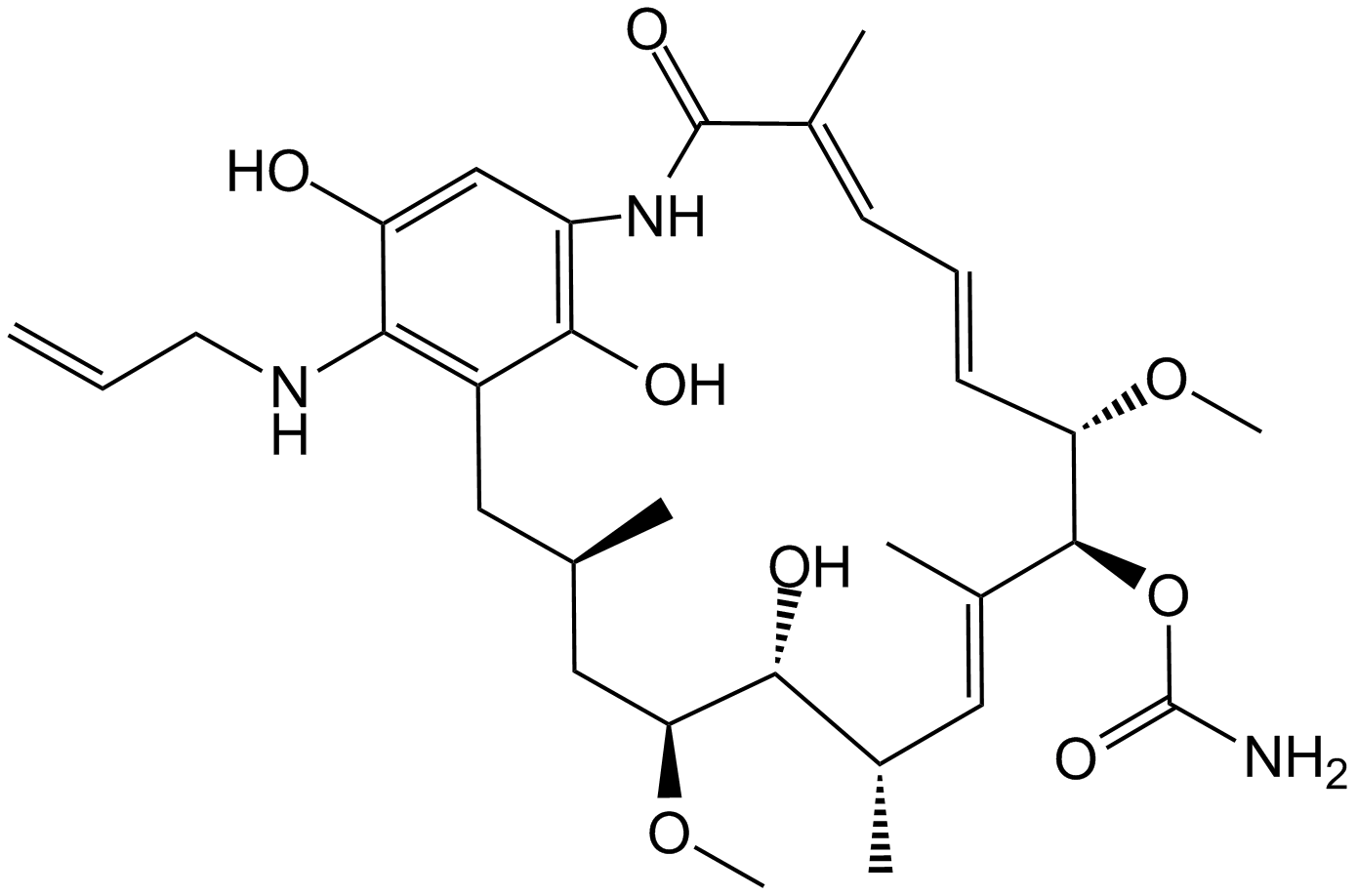Retaspimycin |
| Catalog No.GC10327 |
Products are for research use only. Not for human use. We do not sell to patients.

Cas No.: 857402-23-4
Sample solution is provided at 25 µL, 10mM.
Retaspimycin is a water-soluble hydroquinone hydrochloride salt inhibitor of Hsp90 [1].
Hsp90 is a member of the Hsp family. The other members of this protein family are Hsp40, Hsp70 and so on. These proteins act as molecule chaperons and participate in many cellular processes. When cells are exposed in stress, some proteins become unstable, accumulate to form aggregates and subsequently cause cell apoptosis. In this situation, Hsps will help their client proteins folding correctly, accompany them to be translocated to the correct location and thus prevent the cells from apoptosis. Hsps are required for cancer cells development. They are found to overexpress in a variety of cancer cells. Therefore, the inhibitors of Hsp are thought to be attractive therapy for cancer treatment. As an inhibitor of Hsp90, retaspimycin works through binding to the ATP-binding pocket of Hsp90 N-terminal [1].
In both RPMI-8826 and MM1.S cells, treatment of retaspimycin resulted in degradation of the Hsp90 client proteins, for instance, c-RAF and Her2. It also caused increased levels of Hsp70. Besides that, retaspimycin is found to prevent RPMI-8826 cells from secreting the immunoglobulin light chain. In breast cancer cells which are resistant to trastuzumab, treatment of retaspimycin potently caused Her2 degradation and resulted in tumor growth suppression and cell apoptosis [1].
Retaspimycin is often used as combination therapy with other drugs in cancer treatment. In mice bearing GIST-882 (gastrointestinal stromal tumor) xenografts, the administration of retaspimycin associated with imatinib showed a significant effect with a 66% tumor regression. In mice bearing GIST-PSW xenografts, both the combination treatment of retaspimycin and imatinib or sunitinib showed effective antitumor activities in reducing tumor burden. When used alone, retaspimycin reduced tumor volumes by 84% and 69% in GIST-PSW and GIST-882 mice models, respectively. Moreover, retaspimycin is found to decrease the mitotic activity in these two models. However, the antimitotic effects of retaspimycin were less significant than of imatinib or sunitinib or the combination treatment [2].
References:
[1]. Hanson B E, Vesole D H. Retaspimycin hydrochloride (IPI-504): a novel heat shock protein inhibitor as an anticancer agent. 2009.
[2]. Floris G, Debiec-Rychter M, Wozniak A, et al. The heat shock protein 90 inhibitor IPI-504 induces KIT degradation, tumor shrinkage, and cell proliferation arrest in xenograft models of gastrointestinal stromal tumors. Molecular cancer therapeutics, 2011, 10(10): 1897-1908.
Average Rating: 5 (Based on Reviews and 30 reference(s) in Google Scholar.)
GLPBIO products are for RESEARCH USE ONLY. Please make sure your review or question is research based.
Required fields are marked with *




















